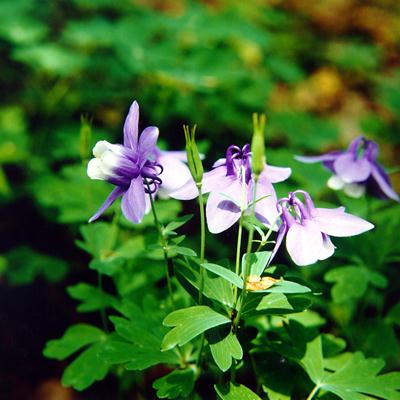Part 2: Shuzenjicho Town; Excellent Hot Springs Place Discovered by Ancient Buddhist Priest Kuhkai, and Leavs Tragidy of The Ruin of Genji Clan
By Shohei Kurita
The copyright is reserved.
Dogtooth violets come into bloom in
early spring telling that warm season
will arrive soon.
Introduction
You can arrive at Shuzenji by getting on the train of Izuhakone Railway for 32 minutes from Mishima starting station. The fare is just \500 for adult Shuzenjicho Town is one of the oldest hot springs place in Japan which has been loved by many eminent writers since Meiji Era to stay and to taste its natural beauty to their heart's content. Its excellent quality of hot springs, cherry blossoms on Katsuragawa River in spring, red-burnt leaves stretching over the river in autamn. All the nature in Shuzenji atrracts and fascinates visitors such as sightseers from foreign countries,newly married couples, ripen couples, and so on.
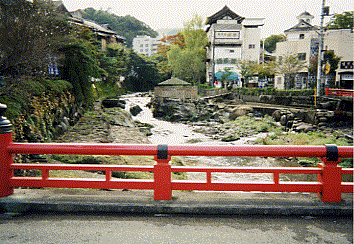 Figure 1 Figure 1Katsuragawa River and Tokko-no-Yu Spring enclosed with bamboo fence in the middle of the river. The spring was discovered by buddhist priest Kuhkai about 1,200 years ago.The hot spring is gusing out of the bottom of the river. |
As to the historical relics of Genji Clan, there are two graves with
sad stories. One is the grave burying The Second Shogun Yoriiye
Minamoto of Kmakura Shogunate. Yoriiye was killed by Hojyo Clan's
intrigue., And the other is the grave of Noriyori Minamoto, a younger
brother of suspicious Yoritomo, the First Shogun. He encountered
with a sudden attack by many horsed warriors around the confined
house, who were ordered by Yoritomo and he was forced to commit
suicide with his own sword, Alas what sad stories they are! Yoriiye's
grave stands right aside of Shizuki-Den Temple which his mother
Masako Hojyo built grieving for her son's violent death..
Kidoh Okamoto, an eminent writer was deeply impressed with Yoriiye's
sad story and wrote a famous novel of "Story of Shuzenji" in Taisho
Era, which was dramatized and was once played in Paris too
About 430 years ago, Iyeyasu Tokugawa, the founder of Tokugawa
Shogunate visited Egawa Family's Mansion in Nirayama and he was
captivated by a lovely girl at the first glance, who was chosen from
Myokokuji Temple, Shuzenji Village to serve him food. The purpose of
Iyeyasu's round trip to Middle Izu was to inspect what the local land
was. He made later her live in his castle to serve him together with the
other mistresses. Now let us go to Shuzenji Town
Giographical Features of Shuzenjicho
Hot Springs Place
The strip of Shuzenjicho Town Hot Springs Place is surrounded by
many moutains of several hundred meters high as shown by the map
beneath(See Figure 2)..
It takes around 30 minutes on foot to "Shuzenji Onsenkyo" (Shuzenji
Hot Springs Place),from Shuzenji turminal station. Or it takes only 5
to 10 minutes, if you get on a bus to "Shuzenji Onsenkyo" in front of
the turminal station.
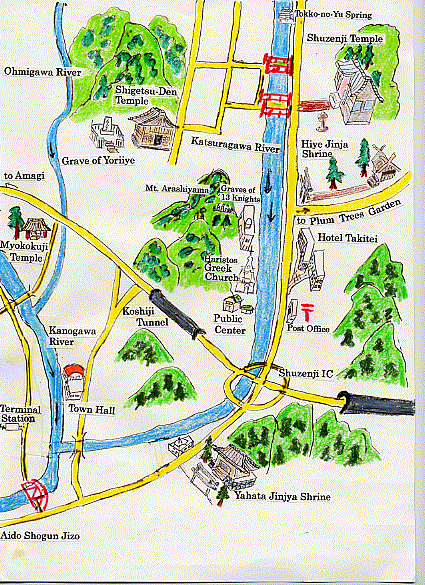 |
Figure 2 Map of Shuzenji Hot Springs Place |
When you go along with the road before Hiye Jinja Shrine to right
direction, you will arrive at the plum trees forest in which 3,000
plum trees of 20 kinds for 30 minutes. The ages of these trees
are between 30 and 100 years. You can see their blossom in late
Feburuary to early March every year.
In their blossom season you can eat there sweetfish (called "Ayu"
in Japanese) broiled with salt or "Shiitake" mushrooms broiled with
soy source which are so tasty. "Ayu" are very clean fish eating
only moss on rocks in rapids in rivers, and accordingly they emmit
a sweet smell like watermelon. The place right beyond Shuzenji
Inter Change is the entrance to Syuzenji Springs Place, and you
will see Mt. Arashiyama on your left beyond a mountain with four
antene atop. In the mountainside of Mt. Arashiyama there are the
graves of 13 knights who fighted against Hojyo Clan's force as
Yoriiye's retainers and died in defeat immediately after Shogunate
Yoriiye's violent death.
Passing through the road for several minutes, you will soon see
Public Center Hall equipped with the local historical information
pavilion on your left. The neighbouring restaurant house named
"Yakuzen-no-Yakata" is a specialized house to offer herb-centered
healthy feast. You will be served with 10 kinds of dishes for \2,500
here, although it supply customers with verious menus including
cheaper to higher courses.. The feast is cooked around black rice
From hereabout you will see various kinds of hotels, inns or bathing
facilities here and there. I and my wife often visit Hotel Takitei on
right side of the road, which connects the condominium-equipped
annex. The fee for only bathing is \1,000 a person. The hot spring
it offers is one of the oldest hot springs in Shuzenji and we are
always relaxed.
"Aidoh Shogun Jizo" (Child-Loving Shogun Guardian Deity) Deifying
Yoriiye Shogun
After leaving the turminal station and walking accross the red iron
bridge, you will see a tall stone-carved Jizo (Guardian Deity) capping
a cap on his head and wearing a woolen striped overall and red apron
at the corner of the crossroad on your right side. He is accompanied
by six small child guardian deities wearing the same type of overall,
red apron and red cap on each head. The tallest one is "Aidoh Shogun
Jizo" (Child-Loving Shogun Guardian Deity)(Figure 3).
After having acted the second Shogunate for three years by
succeeding his father Yoritomo, he was deprived of his duty by his
grand father (father of Yoritomo's wife) Tokimasa Hojyo, was exiled
to Shuzenji and confined. He often came to this place and thought
of his one daughter and three sons as a fond father, whom he left
in Kamakura, looking up the moon. He loved children in the local
village and often saw them playing "Sumo" (Japanese Wresling).
And finally he was killed by a sudden attack by Tokimasa's intrigue
when he was bathing.The notice board satnding there tells the
story as the following:
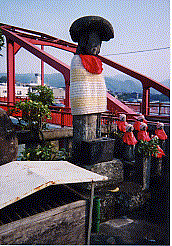 Figure3 "Aidoh Shogun Jizo" (Child-Loving Shogun Guardian Deity and six child guardian deities |
| Alas How Pity Genji Clan's Destiny Is! It Restored and Ruined, Commencing
in Izu and Ending in Izu Yoritomo satisfied his father Yoshitomo's resentment and accomplished the great deed of the restoration of Genji Clan. But he lost a few allys by killing younger brother Yoshitsune who established brilliant military services, and also killed younger brother Noriyori by making a retainer Kajihara attack him suddenly, believing Hojyo Clan's false charge. Did Yoritomo go mad or was he panick-striken? He seemed to be not in normal mind. Did he saw the ghosts of his brothers and Emperor Antoku (who died as a victim in the last battle between Genji and Heike clans). It was December 1198 that he fell from his horse at Inamuragasaki, Kamakura, on his way to the celemony place of a bridge completion on Sagamigawa River. He died on January 13, next year,because of an injury at that time.. His age was 53. Because of Yoritomo's sudden death, the political power of Kamakura Shogunate fell into the parent and child Tokimasa Hojyo and Masako. Hojyo, Yoritomo's wife was called "Ama Shogun" (Nun Shogun) became the guardian of her child Yoriiye, the Second Shogun. But after only three years, Yoriiye was imprisoned in Shuzenji Village. In Kamakura, Yoshisada Hiki, Yoriiye's wife Wakasa-no-Tsubone and Yoriiye's eldest son Ippan were killed or committed suicide together with Hibi Family, in the sudden attack by Hojyo's force. Shigetada Hatakeyama who was the greatest faithful retainer to Minamoto Clan was told by Tokimasa that emergency happened in Kamakura. And he was also killed on his way to Kamakura by the troops of Tokimasa. Sanetomo, the third Shogun was killed before a huge maidenhair tree in the premisses of Kamakura Hachimangu Shrine (the tree still stands there) by his nephew Kugyou who believed Hojyo's false that Yoriiye his father was killed by Sanetomo. Kugyo at once was arrested and punished to death there. All the things were Tokimasa's tricks. -Some Lines Ommited- Written By Tomosaku Yamaguchi Aidoh Shogun Jizo (Child-Loving Shogun Guardian Deity) Tokimasa is crueler than devils, is'nt he? The first Acting Shogunate Tokimasa made Yoriiye, the Second Shogun and his grand son become a buddhist priest exiled him to Shuzenji and imprisoned in a house on a moutain. Fond child Yoriiye thought of his children in Kamakura and called children in hereabout to play with them. He often visited the mountain in Yokose with them to look the moon reflecting on the waves of Kanogawa River. On July 8 in 1204, the sounds of insects suddenly stoped. Is'nt this Hojyo's attack? As soon as Yoriiye thought of it, he was bound by the enemy in naked and was cut to pitiable death. It was his 23 years of age.. How sad it was to see the figure of the Second Shogun who was cut into pieces by swords. Dwellers in Shuzenji Village who heard this tragidy raised money with rightious anger and built the guardian deities deifying Shogun Yoriiye at this Tsukimigaoka Hill (Moon-looking Hill which he often visited with children in the village. Ah! For long time The guardian deity deifying Shogun Whom we think of "Number One" Jizo in Japan Has stood at Yokose and Has given us noble virtuous deeds |
For Long Lasted Rome and Shortly Ended Genji
The reasons Rome had lasted for 1,200 years were heavily resulted from
the fact that Romans picked up and promoted persons who were fetched from
the nations they conquared as slaves or gladiators, to responsible positions
in the Roman government in accordance with their ability as well as Romans'
superior ability of organization, superior ability of civil engineering,
and long distant roads in all directions from Rome.
In contrast to this, how poor suspicious Yoritomo's strategy was! He killed
youngest brother Yoshitsune and younger brother Noriyori who established
many brilliant military sevices in the war against Heike Clan, for all
their denials of that they had any mind of rebellion. If Yoritomo had so
generous mind of allocating the young brothers to important positions in
Kamakura Shogunate, such tragidy of the ruin of Genji Clan would not happened.
The period between Genji Restoration and the Ruin of Genji Clan was only
27 years.
I imagine that Yoritomo attracted people and samurai groups by his appearance of a great man, and controlled retainers skillfully. It is said that he had ability of organization.At any rate, a volunteers group in Yokose take care of this Aidoh Shogun
Jizo, and since 2002, they began to hold an event of "Lantern Offering
On The Water Of Kanogawa River" on August 25. as a topic of the Anniversary every year.
Yokose Yahata Jinjya Shrine Deifies Yoriiye
When you walk to Shuzenji Hot Springs Place along the road, you will soon
see the small Yokose Yahata Jinjya Shrine on your right side This shrine
apotheosizes the second Shogun Yoriiye. In old time of Kamakura, this place
was the gate of Shuzenji Temple which had wide premisses and two Deva kings
stood glaring incoming people. These Dava kings were moved to Sigetsuden
Temple. So yuo can see them the inside the temple.
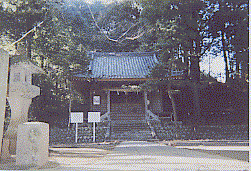 Figure 4 Yahata Jinjya Shrine stands quietly at Yokose.In the right aside of the shrine, there is a flat low shrine in which accomodates a stone with wonder story since the time Masako Hojyo lived about 800 years ago.  |
There are two notice boards in front of the shrine, one for the shrine and the other for Aidoh Shogun Jizo. The board for Yahata Jinjya Shrine explains as the following:
| Yahata Jinjya Shrine This shrine was a tutelary god for old Shuzenji Village and at the same time apotheosizes the second Shogun Yoriiye. At the outset on Tsukimigaoka Hill which was 200 meters down to east from here, there was a small shrine which accomodated two old figures.And later people built the shrine here which accomodated a standing statue of Yoriiye Shogun in full dress, and named Yahata Jinjya Shrine. |
Iyeyasu, Founder of Tokugawa Shogunate Was
Captivated at The First Glance by A Girl Served
Hi��
When you turn to the left on the road from Shuzenji Bridge after going out from the terminal station, please pass through the bridge accross Ohmigawa River, go straight, and you will see Myohkokuji Temple (Figure 5) on your left.
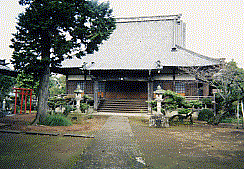 Figure 5 Myohkokuji Temple was the place where Oman-no-Kata, one of Iyeyasu Tokugawa's mistresses had grown up. |
This temple was the place where a lovely girl who later became one of Iyeyasu Tokugawa's mistresses had grown up. Iyeyasu was the founder of Tokugawa Shogunate and opend the door of Yedo Era which continued about 300 years. When Iyeyasu was making his inspection trip to Middle Izu, he met her at the mansion of the local land lord of Nirayama and he was captivated at the first glance by a lovely girl who was selected from Shuzenji Village to serve him food. The stone monument in front of the gate of Myohkokuji Temple tells the story as:
| History of Koga Daikoku God of Good Fortune Koga�@daikoku God (one of the seven gods of good fortune) at Myohkokuji Temple has been worshipped by people as an unknown god whom Oman-no-Kata deeply revered. She was born as a daughter of Masaki Clan who was the lord of Katsuura Castle in Chiba. But when she was two years old, the clan downfell, and her mother escaped to Kageyama Clan who had a land in this place, holding her daughter in her arms. She was left in the priest's hand of Myohkokuji Temple and grown up by him. It was her seventeen years of age when she was chosen from Shuzenji Province to serve food to Iyeyasu Tokugawa, the founder of Tokugawa Shogunate at the mansion of Egawa Family acting Nirayama Governor, when Iyeyasu made a round inspection trip to Middle Izu. Iyeyasu earnestly desired that she would come to his castle as one of his mistresses, and she later gave a birth two sons of Iyeyasu, namely Yorinobu and Yorihusa. Yorihusa was given by Iyeyasu as one of the highest positions of Daimyo (feudal lord) as Tokugawa Clan's three direct line relatives. Oman-no-Kata was earnest believer of Hokke sutra, and later dedicated Koga Daikoku God to Myohkokuji Temple thanking her happy life. The Daikoku God which you can see is the very itself Oman-no-Kata worshipped. January 1977 Myohokuji Temple |
Every one is apt to dote upon sons and daughters, or grandsons and granddaughters in his or her later years. Yorinobu was Iyeyasu's tenth son and Yorifusa his eleventh. Iyeyasu gave his three youngest sons great teritories individually in their infancy. These teritories were called Ohari Han (feudal clan), Kii Han, and Mito Han. When a shogun had not any son, the one who would sit the next shogunate was selected from the three direct line relatives.
In the premisses of the temple, a huge miscanthus tree of 700 to 800 years of age stands. It sheds fruits like rain in every autumn.
Hiye Jinjya Shrine Is The Place Where Noriyori Minamoto Was Confined by Yoritomo
Hiye Jinjya Shrine stands in the place where Noriyori Minamoto had been confined in a house called "Shinkoh-In" and was suddenly attacked by his brother's force in 808 years ago. A small board there simply explains the event as:
| Old Site of Shinkoh-In There was once Shinkoh-In which was one of the eight child-temples of Shuzenji Temple. Noriyori Minamoto was confined in this child temple by his brother Yoritomo who had misapprehension of Noriyori. On one day in 1194, the force of Kagetoki Kajihara consisting of about 500 horsed warriors made sudden attack on Noriyori and he could not help committing suicide with his own sword, after his desperate deffence. |
It was on May 28,1193 when Yoritomo made a hunting by which hunters surrounded animals and drove them into one direction at the skirts of Mt. Fuji .At the very same time, a famous event called "Vengenance by Brothers Goroh and Jyuroh Soga" that almost any Japanese know it but nevertheless do not know the strange event after they succeeded in their vengenance, happened.
The reason why the brothers run deeply into Yoritomo's camp and slashed has been kept as a riddle until today. Younger Jyuroh died in the battle and elder Goroh was arrested and executed next day. According to one view, crafty Tokimasa Hojyo might plot it.�@�@
Tragidy of Noriyori by Suspicious Yoritomo
The rumor of Yoritomo's death quickly reached the capital of the shogunate
Kamakura. At the time, Noriyori was caretaking Kamakura and consoled Yoritomo's wife Masako Hojyo who was in the middst of grief hearing this bad news, saying "Don't grieve, my dear sister. I am here closely by you." After Yoritomo returned to Kamakura, he called up Noriyori to censure and asked Noriyori, saying "You must have the mind of rebellion. You made Soga brothers attack me suddenly, utilizing their vengenance, didn't you? You thought to deprive me of the shogunate, didn't you?" In spite of Noriyori's desperate denials, he could not dispel Yoritomo's doubt. When Yoritomo ordered Noriyori to attack Yoshitsune four years ago, he refused it,
because he did not want to kill a real brother. Yoritomo had hated Noriyori.
Alas! Misfortune calls misfortune. Perhaps Kamakura Age was the time
that many samurai clans were thinking to attack the other clan when
being off its guard in order to hold the power. They doubted each other. Taroh Tohma, a retainer of Noriyori slipped under the floor of Yoritomo's sleeping room, was discovered and arrested. Yoritomo exilled Noriyori to Shuzenji and confined him. When he was suddenly attacked by Kajiwara's force, he drew his strong bow and the arrows killed many warriors. For
some minuts, the enemy could not approach the small temple, but before such a big force he could not help committ suicide by his own sword after firing the temple himself.
It is said that Hiye Jinjya Shrine was built by Buddhist Kuhkai 1,200 years ago. In the premisses, there stand huge cryptomeria, zelkova, black pine trees, and a yew oak tree. Above all, the yew oak tree is 25 meters high
and its roots' space is 55 meters in radius.If you go beyond Tokko-no-Yu Hot Spring alog Katsuragawa River, through Akagaeru Park, accross the roard and walk up to the hill, you will see the small grave of Noriyori quietly standing among the other ones.
Shizukiden Temple: The Temple by Which Masako Hojyo Held A Mass for Her Son Yoriiye
Shuzenji Temple is situated in the center of Shuzenji Hot Spring Place. There is a red colored bridge called "Kokeibashi" Bridge in the right front
of the temple's gate. When you walk across the bridge and go up the slope to a moutain, you will see a plain wooden temple on the space above the steps of stones. That is Shigetsuden Temple. The temple is the oldest wooden temple in Izu Peninsula.
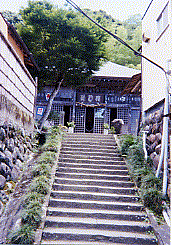 |
Figure 6 Shigetsuden Temple is the oldest wooden temple in whole Izu.The temple was built by Masako Hojyo to hold a mass for her son Yoriiye Minamoto's soul. He was the Secod Shogun of Kamakura Shogunate. |
| Figure�@7 Dedicated Buddha, Gautama The work was in Kamakura Era. |
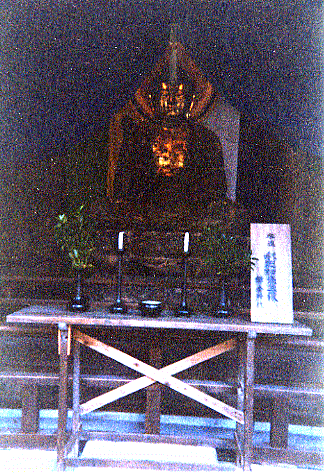 |
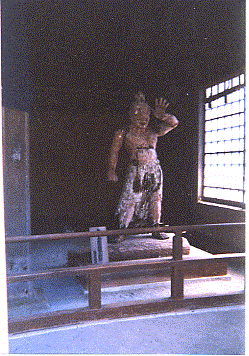 |
Figure 8 The left- side-wooden statue of the two Dava kings (Nioh in Japanese) which stood at the gate of Yokose Yahata Jinjya Shrine in old time. The work was in Fujiwara Era that is older than Kamakura Era. |
The notice board explains its story as the following:
| Shigetsuden Temple Shigetsuden Temple was built by Masako Hojyo called Nun Shogun as the place of holding a mass for Yoriiye Minamoto's soul. The temple is the oldest wood made building in Izu Peninsula. The term "Shigetsu" means "sutra". The building once accomodated the some thousand books of Song-made sutra transported from Kmakura, but the sutra books were lost except "Light-Emitting Hannya Haramidda Sutra Nomber 23" which has been kept by Shuzenji Temple as a cultural asset (which is registered by Shizuoka Prefecture. The deticted Buddha Gautama of 203 cm high is a parquet work and also the largest one among the Buddha statues in the whole Izu. As this statue calved in Kamakura Era adopts a rare form of Buddha having a flower of lotus in his right hand which Zen School was doing, Shizuoka Prefecture registered it as a cultural asset. The statues of two Dava kings are older than the Buddha one and it was calved in Fujiwara Era. In ancient time, the premisses of Shuzenji Temple was so wide, and the gate within which accomodated the Dava kings stood at Yokose. All the three very valuable statues were repaired significantly for two years in 1983 and 1984. The Kanji letters of "Shigetsuden" in the frame above the entrance was written by ��R��J, a excellent Buddhism priest in Yuan (���j in old time. However it is a replica and the real one is kept in the main temple of Shuzenji Temple. |
The appearance of Shigetsuden Temple is artless comparing Shuzenji Temple which is situated beyond Katsuragawa River. As written on the notice board, "Shigetsu" means Buddhism sutra and "Shigetsuden"
means a storehouse of sutra. Masako Hojyo, mother of Yoriiye built
the temple right beside the grave of her son to hold a mass for her
son, Yoriiye's soul. On the notice board in front of Yoriiye's grave
(Figure 9), the next explanation is written:
| Yoriiye's Grave Yoriiye who sat the seat of the Second Shogunate succeeding his father Yoritomo in 1199 and eagerly tried to establish the foundation of Kamakura Shogunate (Government), restraining Hojyo Clan who became arrogant after Yoritomo died. Yoriiye was 18 years old. But unfrotunately young Yoriiye defeated the ugly political battle and coud not overcome the rapid change of the time. He was deprived of his duty and was exiled to Shuzenji, after acting Shogun for only six years And in 1204, he was assasinated by Tokimasa Hojyo, his grandfather, when he was bathing. Yoriiye was 23 years old. "The Story of Shuzenji" (the author Kidoh Okamoto) describes the historical romance between the young Shogun Yoriiye at the confined place and a mask maker Yashaoh based on the political background above mentioned. This monument was built by the superior of Shuzenji Temple at the 500th anniversary of Yoriiye's death as the monument of a mass for him. And his real grave are the two of five-fold-tower lantern made of stone. |
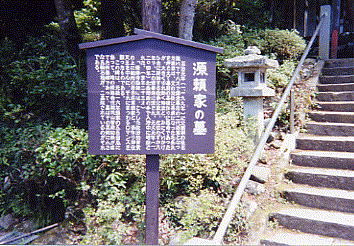 Figure 9 The notice board in front of the grave of Yoriiye Minamoto,the Second Shogun of Kamakura Shogunate. |
A Reappeared Outer Hot Spring Called "Hakoyu" by Shuzenjicho Town Where Yoriiye Was Killed
There is a small wooden "Sotoyu" (outer hot spring facility) called
"Hakoyu" operated by Shuzenjicho Town at the right place where
Yoriiye was sudenly attacked and killed 798 years ago (in 1204).
Sotoyu means facilities in which only supply people with hot spring
for bathing. Accordingly the facilities do not supply food or staying
services. Most of the facilities recieve small sum of money from
customers, while some ones are free. The fee of this "Hakoyu" of
bathing is only \350. The notice board in front of it explains its
history as the following:
| The History of "Hakoyu" In Shuzenji as the oldest hot spring place in Izu, there were nine outer bathing facilities where all were prosperous with customers coming to bath since ancient time. However as all the outer facilities in Shuzenji disappeared after 1945, except "Tokko-no -Yu", our Town rebiult this "Hakoyu" in Feburuary 2000. According to "Azumakagami", the annal edited by Kamakura Shogunate, the second Shogun Yoriiye of Genji Clan who had been exilled and confined in Shuzenji, was attacked by the assasinators of Hojyo Clan in 1204 when he was bathing. When a hotel builder digged the ground to make its foudation, hereabout he found the marks of the old bathroom..It seems to be the very one Yoriiye had used 798 years ago. |
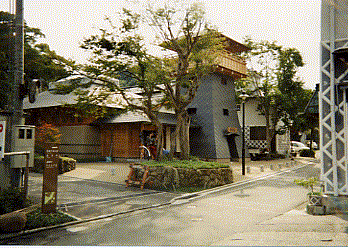 Figure10 Rebuilt "Hakoyu" (one of the old 9 outer hot spring facilities in Shuzenji. The town operates it. The place seems to be the very one Yoriiye was killed by Hojyo Clan, when he was bathing 798 years ago.. |
Yoriiye at his 18 years of age succeeded his father Yoritomo's
throne of Shogunate in 1199, as Yoritomo fell from his horse
and died in several months later soon after the accident. In
�hAzumakagami" which Hojyo Clan edited after it userped the
political power tells that Yoriiye was incompetent. But I can
not believe it. Yoriiye seemed to repress Tokimasa Hojyo's
arrogance after Yoritomo's death and defeated.
After Yoriiye died, his younger brother Sanetomo succeeded
Shogunate, but he has no actual power. Sanetomo grew up
as a literary youth and became a superior "Tanka" (a
Japanese poem consisting of 32 phonetic sounds) poet. He
wrote many excellent and beautiful Tankas (poems). His Some
poems have pathetic feeling as the following:
| Japanese Phonetic Sounds Itohosi ya Miru ni Namida mo Todomarazu Oya mo Naki Ko no Haha wo Tazunuru |
English I feel pity, seeing a child crying after his mother to fatigue on a way, And he seeks mother who is dead. |
And Sanetomo was killed by his brother Yoriiye's son Kugyo
in the premises of Kamakura Tsurugaoka Hachimanguh
Shrine, who believed the fabrication by Tokimasa Hojyo.The
very real maidenhair tree still stands there. Kugyo was
arrested and executed to death at once, and Genji Clan was
brougt into ruin.
Shuzenji Town Holds Event Of 800th Year
Anivassary Of Yoriiye On July 19, 2003
You could be able to see the old Kamakura samurai culture
on July 19, this year, as Association of Shuzenji Town
Sightseeing, Coorporative of Shuzenji Town Hotels & Inns,
etc. held "The 800th Anniversary Of Yoriiye Minamoto"
since he died. The events were::
1.Parade in the old Kamakura costumes,starting Shuzenji
Temple PM 1:45
2.Flea Market near Tokko-no-Yu Spring PM1:00 to PM9:30
3.Outdoor Events �@Mini-Consert,�AYosakoi�@Soran�|Bushi
�@Song,�BYosakoi Soran-Bushi Naruko Dance
4.Talk " Shuzenji Monogatari" (Story of Shuzenji) by Kazuko
Huruya, PM7:00 to PM8:00 at Shuzenji Temple
5.Street performances
Those who participated in this anniversary could taste fully
the kamakura samurai culture.
�@
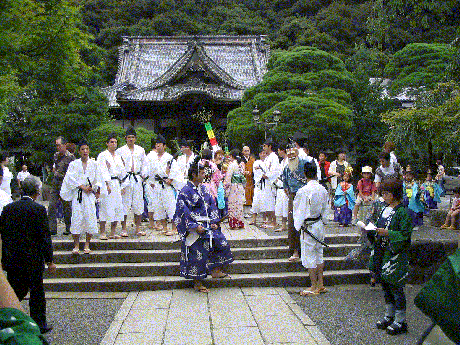 Figure 11 The volunteers to Yoriiye Second Shogun's parade in Kamakura Era were waiting to start in front of the main hall of Shuzenji Temple. The young man in the purple old time costume acted Yoriiye 800 years ago. |
Tokko-no-Yu Hot Spring Discovered by A Koboh
Daishi Priest 1,200 Years Ago Still Gushing Out
at The Middle of Katsuragawa River
Priest Kukai (who has been rather called "Koboh Daishi" and lived
AD 774 to 835) was a superman whom every one in this country
knows together with his rival priest "Saicho". He was away studying
Buddhism in Tang (China) and complehended what "Mikkyoh (secret)
Buddhism" is from the most respected priest "Kei Ka" who stood
at the peak of Chinese Mikkyoh at that time. "Mikkyoh" does not
simply means "secret" but it refers that one priest teaches one who
entered priesthood the secret principles one by one as his only
student . Japan's most famous Secret Buddhisms are "Shingon
Shuh School" (which created by Kukai) and "Tendai Shuh School"
(created by his rival Saicho).
Kukai was a genius of languages, absorbed different cultures,
and good at caligraphy painting, calving, sivil engineering,etc. like
European great man da Vinci. It is said that he could comprehend
and absorb the secret principles tought by ailing Kei Ka for only
three months, which average man or woman could master for
some ten years.Kei Ka died after he tought him.
After returned to Japan, Kukai widely preached his believing, by
walking all around Japan. Accordingly there are many legends
everywhere in this country. Tokko-no-Yu(See Figure 1)
is one of these:legends
One day Kukai was walking near Katsuragawa River and saw
an old father and a dutiful boy. He was washing his father's body
with water of the river. Kukai poked with his Tokko (a tool of
ascetic practices) at the floor of the river to make hot spring
gush out, thinking the water must be cool to his old father. And
then rich hot spring came out. Since the time,Tokko-no-Yu
has continued to gush out until today.
Shuzenji Temple Built By Kukai (Koboh Daishi)
On the back of the ticket (entrance fee \300.-) of Shuzenji Temple's
Treasure Pavilion, "Tokko made with gold and copper in Heian Era",
"Daikoku God of Good Fortune", and an "Old Wooden Mask" which
they have kept are printed. It is said the mask with ugly face was
made by Yoriiye's order to show his mother Masako Hojyo, when he
was poisoned by some one's intrigue but fortunately had lived.
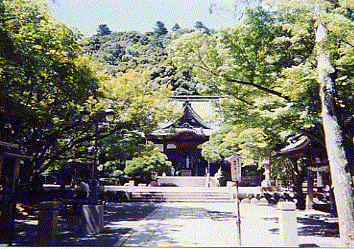 Figure 12 Shuzenji Temple is the center of Shuzenji Town. It has the story for about 1,200 years since Kukai built it. |
The notice board in front of the temple tells the story of Shuzenji
Temple as the following:
| Story of Shuzenji Temple This temple was built by Koboh Daishi in 807. It belonged to Shingon Shuh School for about 470 years, and then since the time Priest Rankei was confined in 1275 in Kamakura Era because of doubt on spying, the temple belonged to Rinzai Shuh School for about 220 years. During the period the temple was destroied by the battle between Kamakura Shogunate and Kunikiyo Hatakeyama who rebelled. And in 1407 the temple was visited by a big fire to burn all of the buildings. Sohun Hojyo, (he is not a member of Hojyo Clan but independently became)�@the lord of Nirayama castle after Kamakura Era donated a vast area to the temple and rebuilt the buildings and in 1489 he invited his uncle Priest Ryudan to sit the superior of the temple. Since then the temple has belonged to Sodoh Syuh School. |
If you farther go to some five kilo meters distance from the
place the present Shuzenji Temple, you will finde Shokaku
-In which is called "Oku-no-In" (temple in the depth), the
only building left until today of the eight buildings Sohun
constructed in very calm environment. The place was the
one where Kukai did ascetic practice after he confined a
bogy into the cave there. the legend tells so.
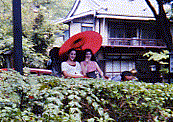 Figure 13 A jinrikisya (man-powered wheel) for sightseeng starts in front of Shuzenji Temple. |
August 11, 2003.
TO PART 1: MISHIMA CITY
TO PART 2: SHUZENJI TOWN
TO PART 3: NIRAYAMA TOWN
TO KAWAGOE CITY
TO HAGI CITY
TO PAGE SHOWING CONTENTS
TO CONTENTS IN JAPANESE EDITION
YOUR IMPRESSION
